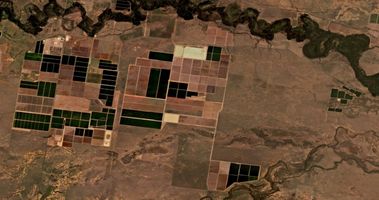In NSW, water is shared and used through a system of licences and approvals.
If you have a licence, you can take a certain amount of water based on:
- Your share component (or entitlement): this is a fixed number on your licence. It gives you a share of water in a water source.
- Your allocation: this tells you how much water you can take at any given time. It can change during the year when more water is available or when you trade water. A water year is from 1 July to 30 June.
Your allocation is calculated from your share component. It is based on the amount of water available or expected in the water source.
WaterNSW keeps water accounts. They track the changes in water availability for each licence. It’s against the law to take more water than your licences allow. This is called an overdrawn account.
Why do we care about overdrawn accounts?
If you overdraw your account, you:
- break the rules of the Water Management Act 2000, which means breaking the law
- limit water access for others who follow the rules
- might take water meant for the environment. This can harm water sources and ecosystems.
We’re watching how well people follow these rules in NSW.
How can you avoid overdrawing your account?
When you need to take water, follow these steps:
- Know your allocation and licence and approval conditions. They may have conditions that limit how much water you can take and when you can take it.
- Check your account balance to see how much water you have available. If you don’t have enough, trade water into your account.
- Order water before taking it from a regulated river.
- Pump only what you require and have the water available. Don’t take more than you have ordered. Don’t breach other limits or conditions on your licence or approval.
- Record how much water you have taken so that your account balance is kept up to date.
To keep track of your water account register for iWAS. It is a 24/7 online water account system that is available to all WaterNSW customers. You can find out more at waternsw.com.au/iwas
What happens if you overdraw your account?
We know from experience that most water users want to do the right thing. They believe water should be shared fairly and protected.
We respond to overdrawn accounts in several ways, taking into account things like the amount of water taken and the user’s history of compliance.
Actions we take can include:
- advisory letters
- warnings
- stop-work orders
- penalty notices (fines)
- licence suspensions
- Section 60G charge and /or account debit
- enforceable undertakings
- prosecutions.
Case study: Carrathool enforceable undertaking
A Riverina farming enterprise has signed an enforceable undertaking with NRAR after overdrawing their water accounts by 2,280 ML. The legally binding agreement involves hundreds of thousands in financial costs, loss of some water entitlements and three years of weekly monitoring.

More frequently asked questions
What is a water account?
WaterNSW manages water accounts for all water access licences in NSW. Your water account contains a record of all transactions relating to water allocations for your access licence.
What is the internet Water Accounting System (iWAS)?
iWAS is an online Water Accounting System which allows you to access and manage your water account. iWAS is available to all registered WaterNSW regulated river, unregulated river and groundwater customers.
Find out more at waternsw.com.au/iwas
What is over pumping?
Regulated river water access licences (WALs) have a condition on them requiring water to be ordered before pumping.
Over-pumping occurs when it’s confirmed that you have taken water without an order. Or, you take more water than you ordered, even if you have enough water allocation.
What is a share component and available water determination (AWD)?
Your share component is detailed in your WAL and specifies the share of water available to you in a water source.
Available Water Determinations (AWD) reflect the availability of water for a specific water management area or source at a given time. Usually, they are applied at the beginning of the water year on 1 July and then incrementally throughout the year.
Go to WaterNSW’s FAQ’s to find out more.
How can I increase my water balance?
You can increase available water by trading water for sale on the market or transferring it from your other account.
Zero share WALs must trade enough water to the water account before taking any water.
Visit WaterNSW’s ordering, trading and pricing page to learn more.